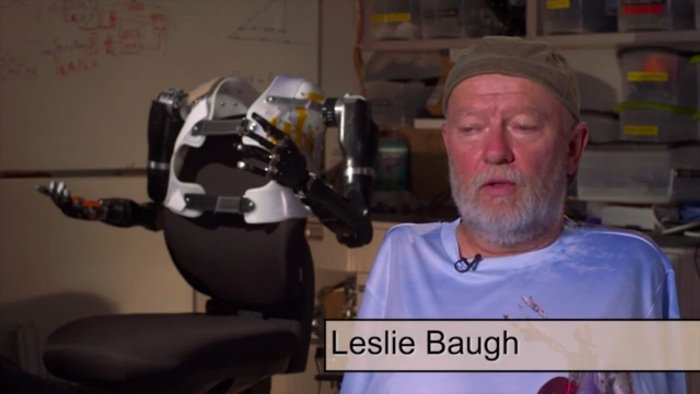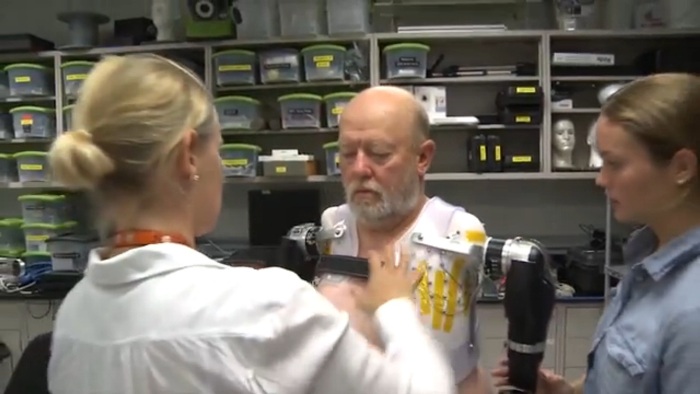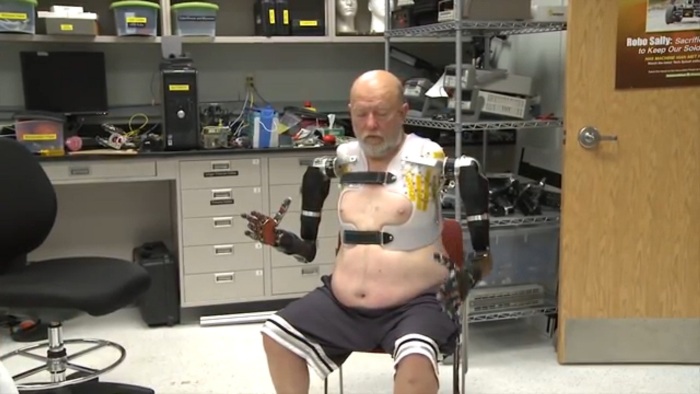Yes, Mind-Controlled Artificial Limb Technology Is Already a Reality
TV shows and movies have been depicting the possibility of controlling limbs or robotic parts directly using the mind and not through muscle-based or mechanical forms of manipulation. However, this possibility has not been successfully exploited yet. Not until recently.
The First to Control Artificial Arms with His Mind
A shoulder-level double amputee has just become the first person to receive a pair of robotic arms that he gets to mind-control. Colorado resident Leslie Baugh lost both of his arms in an electrical accident 40 years ago but is now the lucky pioneer to put on bionic arms that can be controlled directly by the mind. There are no buttons being pressed and complex electrical connections meticulously attached to the muscles. As written on the official press release for the mind-controlled modular prosthetic limbs, Baugh makes history as the first to don a pair of prosthetic limbs that can be controlled by the brain.
The Technology
The mind-controlled bionic arms mentioned here is a creation of the Johns Hopkins’ Applied Physics Laboratory. It is a modular pair of prosthetic limbs that took more than ten years of development with funding from the Defense Advanced Research Project Agency (DARPA). It was developed as an experimental program at the Johns Hopkins Applied Physics Laboratory. The bionic limbs are capable of being moved simultaneously to complete a variety of tasks such as moving objects from place to another, lifting a cup of coffee, and using the vending machine.
The technology appears as a custom socket covering the top half of the wearer’s torso. This custom socket is like a light armor with an open chest portion and slots on the shoulders to accommodate the prosthetic bionic limbs.
Targeted Muscle Reinnervation
Unfortunately, attaching the mind-controlled artificial limb set to Baugh’s shoulders wasn’t as easy as using a plug-n-play device. It required some form of surgery, targeted muscle reinnervation in particular. This surgery was undertaken to move the nerves that used to control the hands into the pectoral muscles where their electrical signals are detected by the harness through which the bionic arms are mounted.
Targeted muscle reinnervation is a relatively new procedure. It is a surgical method wherein the spare muscle of an amputated limb is denervated and subsequently reinnervated using the residual nerves of the cut limb. It does not require implants so there are no issues of foreign materials being rejected by the body. It also enables the production of multiple independent MEG signals.
Learning for the Limbs and the Wearer
To achieve a good amount of control over the artificial limbs, both the limbs and their wearer need to learn and adapt with each other.
In the case of the prosthetic mind-controlled limbs, a pattern recognition software was used to isolate individual contracting muscles on Baugh’s shoulders. The researchers needed to study the communication between these muscles and the frequency and amplitude of the nerve impulses to be able to translate them into specific movements in the prosthetic limbs. In short, they programmed the prosthetic limbs to do specific actions in response to specific nerve impulses.
On the other hand, Baugh also needed to learn how to control the robotic arms by becoming familiar with the actions and reactions achieved in the setup. He had to undergo a training via a Virtual Integration Environment (VIE). Under VIE training, the artificial limbs were not attached yet but Baugh was given the chance to experience how his new bionic arms would work. Eventually, after the artificial arms were attached, Baugh was already able to carry out a number of tasks that are more than just basic. For instance, he was able to move a cup between shelves with varying heights. Even better, he achieved a world first in the field of bionic arms control: simultaneously controlling a combination of motions across both arms.
Outlook
One of the prosthetists involved in the project, Courtney Moran, said that their team expected Baugh to exceed the performance of those who make use of bionic arms that employ conventional systems. They have already exceeded expectations with the speed of learning Baugh demonstrated in being able to use of the robotic arms so they only see great things happening with this project.
Earlier this month, the University of Pittsburgh also published a paper on a similar study, one for a quadriplegic mind-controlled robotic arm. The research results for this research have also been very promising. Arguably, artificial limbs that look natural are better than exoskeletons or bulky artificial limbs so these recent achievements in the field of mind-control and robotic prosthesis are definitely welcome developments.


